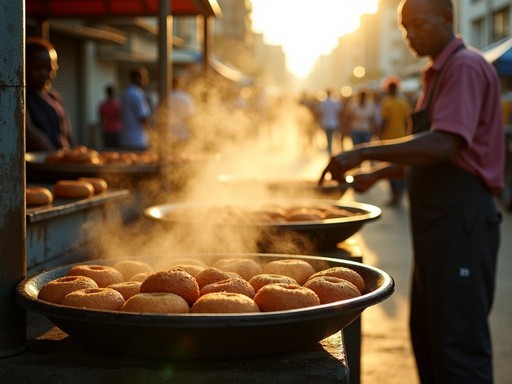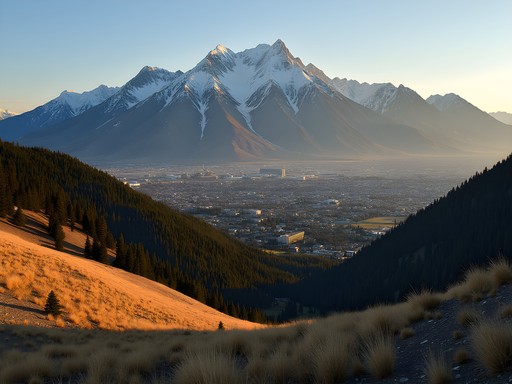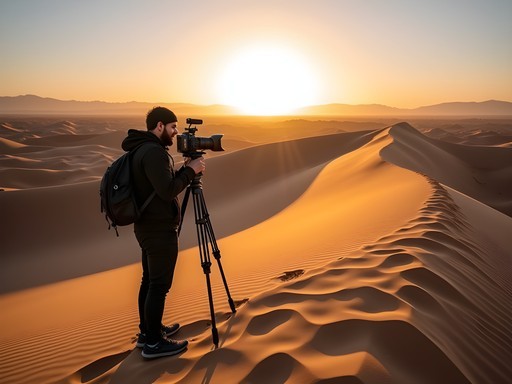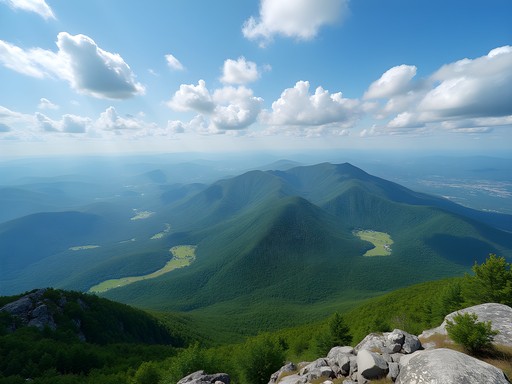Disclosure: This article contains affiliate links. We may earn a commission from purchases at no extra cost to you, which helps our travel content.
The transition from marine to mountain ecosystems has always fascinated me as a biologist. Tanzania offers this ecological gradient in spectacular fashion—from the warm Indian Ocean waters lapping at Dar es Salaam's shores to the glaciated summit of Kilimanjaro at 5,895 meters. This summer, I traded my wetsuit for alpine gear, embarking on a two-week luxury expedition that would challenge both my scientific understanding of altitude adaptation and my personal physical limits. What follows is both a field journal and travel guide for those seeking to experience East Africa's most dramatic environmental contrasts.
Dar es Salaam: Cultural Immersion Before the Ascent
Dar es Salaam serves as more than a logistical starting point—it's a crucial cultural primer for understanding Tanzania. I spent three days acclimating at the luxurious Oyster Bay Hotel, where colonial architecture meets contemporary Tanzanian design. Rather than rushing to the mountain, this coastal pause allowed me to establish a baseline understanding of Swahili culture that would contextualize my entire journey.
The city's vibrant Kariakoo Market became my classroom for basic Swahili phrases, where vendors patiently corrected my tonal mistakes while I examined local produce. The marine biologist in me couldn't resist an afternoon at the Tanzania Marine Science Institute, where researchers are documenting coral bleaching patterns remarkably similar to those I've studied in Southeast Asia.
Perhaps most valuable was my visit to a local coffee cooperative, where I sampled Tanzania's distinctive peaberry varieties while learning about the agricultural practices that sustain communities from coast to highlands. I purchased a bag of freshly roasted beans to brew throughout my journey using my portable espresso maker—a luxury that would prove invaluable during pre-dawn summit preparations.

💡 Pro Tips
- Spend at least two days in Dar es Salaam to adjust to the time zone before heading to Kilimanjaro
- Visit the National Museum for historical context on Tanzania's ethnic diversity
- Practice basic Swahili greetings—they'll be appreciated by porters and guides on Kilimanjaro
The Machame Route: Ecological Transitions
After careful research, I selected the seven-day Machame Route for its optimal acclimatization profile and biodiversity. While Kilimanjaro can be attempted in fewer days, the extended itinerary dramatically increases summit success rates and—more importantly to me—provides time to observe the mountain's five distinct ecological zones.
My guide, Emmanuel, holds degrees in both mountaineering and botany—a rare combination I specifically requested through luxury expedition service. This educational approach transformed what could have been merely a physical challenge into a moving field study. Emmanuel identified endemic plant species while explaining their adaptations to increasing altitude stress—a parallel to my own research on how marine organisms adapt to changing conditions.
The first two days took us through dense montane forest where colobus monkeys observed our passage from the canopy. By day three, we entered the heath zone, where giant heather and protea displayed evolutionary adaptations to increased UV exposure. My altitude monitor tracked not only our elevation gain but also my blood oxygen levels—data I recorded alongside botanical observations in my field journal.

💡 Pro Tips
- Choose a minimum 7-day route for proper acclimatization regardless of your fitness level
- Request guides with scientific or ecological knowledge if you're interested in the mountain's biodiversity
- Document the distinct ecological zones with photographs for a visual record of your journey's transitions
Summit Night: The Scientific Challenge of Extreme Altitude
The final ascent begins at midnight—a strategic departure time allowing climbers to reach the summit at dawn and descend before afternoon weather deteriorates. This nocturnal climb through volcanic scree represents the most physically demanding 6-8 hours of the entire expedition.
As a scientist accustomed to methodical observation, I found summit night uniquely challenging precisely because darkness eliminates visual data collection. Instead, the experience becomes internal—monitoring breathing patterns, cognitive function, and physical responses to decreasing oxygen levels (approximately 50% of sea level at the summit).
My preparation included two months of intermittent hypoxic training using a altitude simulation mask during cardio workouts. While controversial in sports science literature, I found this preparation mentally beneficial, as the restricted breathing sensation was familiar rather than alarming during the actual climb.
High-quality gear becomes non-negotiable at extreme altitude. My expedition down suit maintained core temperature despite -20°C winds, while chemical hand warmers prevented my water supply from freezing. The luxury expedition package included supplemental oxygen as a precautionary measure, though I'm pleased to report our acclimatization protocol was sufficient without intervention.

💡 Pro Tips
- Train specifically for high-altitude exertion by incorporating HIIT workouts in your preparation
- Invest in proper cold-weather gear rated for temperatures at least 10°C below what you expect
- Use a headlamp with red-light capability to preserve night vision during summit attempts
Cultural Dimensions: The Chagga Perspective
While the physical and scientific aspects of Kilimanjaro dominate most narratives, I found the cultural dimensions equally compelling. The mountain is ancestral homeland to the Chagga people, who have cultivated its lower slopes for centuries using sophisticated irrigation systems that predate colonial contact.
Following our descent, I extended my itinerary with a three-day stay at eco-cultural lodge in Moshi, where Chagga guides led cultural tours of traditional homesteads. Here I learned how indigenous knowledge systems include detailed understanding of the mountain's weather patterns, medicinal plants, and water conservation techniques—all developed through generations of observation.
Particularly fascinating was the Chagga perspective on climate change. Elders shared oral histories describing glacial retreat over decades, confirming scientific measurements with experiential data. As someone who documents climate impacts on coral systems, this cross-ecosystem parallel was professionally illuminating.
The traditional post-climb celebration included locally brewed mbege (banana beer) served in communal fashion. After two weeks of physical exertion and scientific observation, this cultural immersion provided essential context—reminding me that mountains, like reefs, exist within human systems as well as natural ones.

💡 Pro Tips
- Budget extra days post-climb for cultural experiences around Moshi
- Learn about Chagga agricultural techniques as an example of sustainable mountain farming
- Ask permission before photographing cultural ceremonies or private homes
Final Thoughts
The journey from Dar es Salaam to Kilimanjaro's summit represents far more than a geographical traverse—it's an expedition through Tanzania's remarkable ecological and cultural diversity. As a marine biologist accustomed to documenting ecosystem transitions along depth gradients, I found striking parallels in the mountain's altitudinal zones, each with specialized organisms adapted to specific environmental parameters. Yet beyond the scientific observations, this journey offered profound personal insights about human adaptation, both physiological and cultural.
Whether you approach Kilimanjaro as a physical challenge, a biodiversity study, or a cultural immersion, the mountain demands respect and rewards patience. The luxury approach—while financially significant—provides crucial time for acclimatization and deeper engagement with both natural and human elements of this iconic landscape. I return to my marine research with fresh perspective on how ecosystems respond to environmental gradients, and how human communities develop sustainable relationships with challenging environments. Perhaps most importantly, I carry with me the Chagga concept of the mountain as both provider and teacher—a perspective equally applicable to the coral reefs that have been my primary focus.
✨ Key Takeaways
- Allow minimum 14 days for the complete Dar es Salaam to Kilimanjaro experience
- Choose longer climbing routes for better acclimatization and ecological observation
- Incorporate cultural experiences with local communities for deeper understanding
📋 Practical Information
Best Time to Visit
June-October (dry season) or January-February (short dry season)
Budget Estimate
$4,000-$6,500 for luxury expedition (excluding international flights)
Recommended Duration
14 days minimum (3 days Dar es Salaam, 8 days climbing, 3 days cultural extension)
Difficulty Level
Challenging















Comments
summerbackpacker
Really appreciated the section about the Chagga perspective! So many Kili blogs focus just on the climb and ignore the cultural context. I spent time with a Chagga family in Marangu before my climb and it completely transformed my experience on the mountain. Understanding their relationship with Kilimanjaro gave me so much more appreciation during the tough parts of the hike. Question for Avery: did you find that the guides incorporated much of the Chagga cultural knowledge during your trek? My guide was amazing at pointing out medicinal plants and sharing local legends about different parts of the mountain.
citypro
Love this journey! Did anyone take the bus from Dar to Moshi? Is it as chaotic as people say? Heading there in October!
beachtime
Took the Kilimanjaro Express bus last year - surprisingly comfortable! Book in advance though, they fill up fast.
exploreadventurer
Just got back from doing almost this exact trip! The bus ride from Dar to Moshi was an adventure in itself lol. Totally agree about the Machame route - the ecological transitions were incredible. We had a guide who pointed out all the endemic plants. Summit night was brutal but worth every frozen finger. Wish I'd read this before going!
happyking
How many days did the Machame route take you? I'm trying to decide between that and Marangu.
exploreadventurer
We did 6 days on Machame. Definitely recommend the extra acclimatization day. Marangu is faster but success rates are lower. Go slow to go up!
Frank Garcia
Excellent analysis of the ecological transitions on the Machame route, Avery. Having completed Kilimanjaro via both Machame and Lemosho routes, I found your scientific perspective particularly refreshing. The way you've contextualized the journey from Dar es Salaam creates a more holistic view than most Kilimanjaro narratives. One thing I'd add for those planning this journey: consider spending at least 3 days in Dar before heading to Moshi. The cultural acclimatization is just as important as the physical one. Also, the Kilimanjaro: The Trekking Guide to Africa's Highest Mountain was indispensable for understanding the mountain's geography before my first climb.
summerbackpacker
Frank, how would you compare Machame to Lemosho? Planning my trip for next year and torn between the two routes.
Frank Garcia
Lemosho offers better acclimatization with its longer approach and is less crowded. Machame has more dramatic scenery but gets busy in peak season. If time permits, Lemosho is my recommendation.
summerstar
Those photos of the ecological zones are incredible! Never seen anything like it!
beachtime
This post brings back so many memories! I did this exact journey last year - started in Dar and then made my way to Kili. The contrast between the humid coastal city and the freezing summit is WILD. I wasn't prepared for how much Dar would captivate me though... ended up spending 3 extra days there before heading to the mountain. The Machame route was tough but so worth it for the views. Did you find the altitude as challenging as I did? Day 4 nearly broke me!
Frank Garcia
The altitude is definitely the great equalizer on Kilimanjaro. Even experienced hikers can struggle if they ascend too quickly. Did you take Diamox or use any other acclimatization strategies?
beachtime
I tried to do it without Diamox but caved on day 3! The headaches were brutal. Wish I'd started it earlier tbh
exploremate
Love this! How was the food on the mountain? Any recommendations for snacks to bring?
Savannah Walker
This brought back so many memories! I did this exact journey two years ago, and your description of summit night gave me chills - in a good way! That moment when the sun rises at Stella Point after hours of climbing in darkness is something I'll never forget. One tip for anyone planning this trip: the temperature changes from Dar to the summit are EXTREME. I used my layering system religiously going up the mountain. Started in shorts in the rainforest and ended with five layers at the summit! Avery, did you visit any of the waterfalls on the Machame descent? That was my favorite recovery activity after summit day.
Avery Andrews
Thanks Savannah! Yes, we stopped at a few small falls during descent - such a welcome sight after the lunar landscape up top! The contrast between ecosystems is just mind-blowing.
travellife
How many days did you spend in Dar before heading to the mountain? Worth it?
Avery Andrews
I spent 3 days in Dar and definitely thought it was worth it! The cultural contrast makes the journey more meaningful.
Sarah Powell
What a thoughtful analysis of the journey from coastal Tanzania to Kilimanjaro's summit. As someone who's studied the ecological impact of tourism on Kilimanjaro, I appreciate your attention to the environmental transitions. The Machame Route does indeed offer the best showcase of these distinct zones. Your section on the Chagga perspective was particularly valuable - too often climbers focus solely on the physical challenge without engaging with the cultural context. I'm curious if you noticed any visible effects of climate change during your trek? On my last visit in 2024, the glaciers had noticeably receded compared to my first climb in 2018. The guides told me the snow cover on the summit continues to diminish year by year.
Avery Andrews
Thank you for this thoughtful comment, Sarah. Yes, I absolutely noticed the glacial recession - our guide pointed out where the ice fields used to extend just a decade ago. It was sobering. Some local researchers I spoke with in Moshi estimated the glaciers could be gone entirely within 20-30 years at current rates. Makes the experience feel even more precious.
Venture X
Premium card with 2X miles, $300 travel credit, Priority Pass